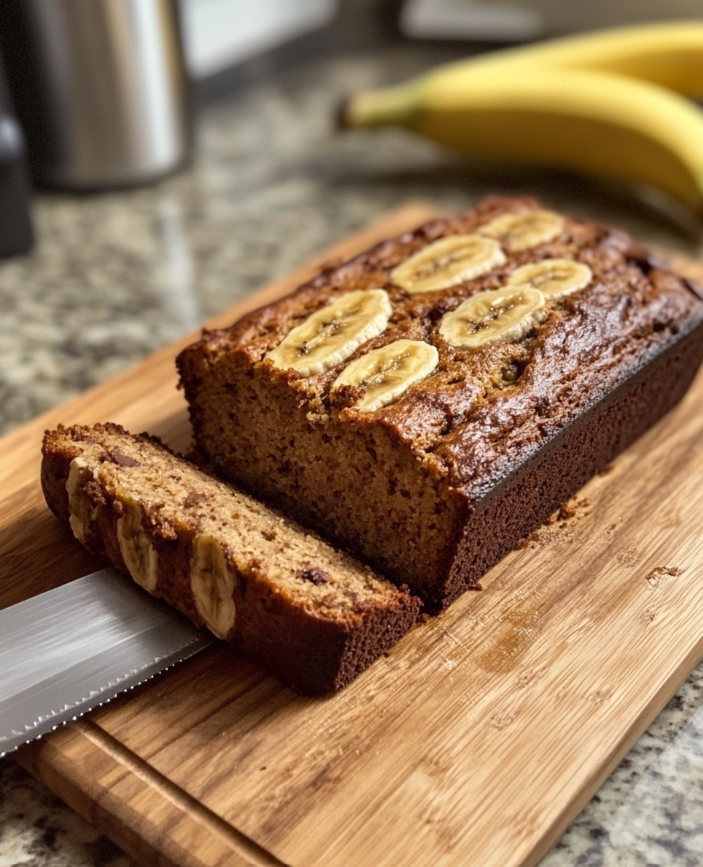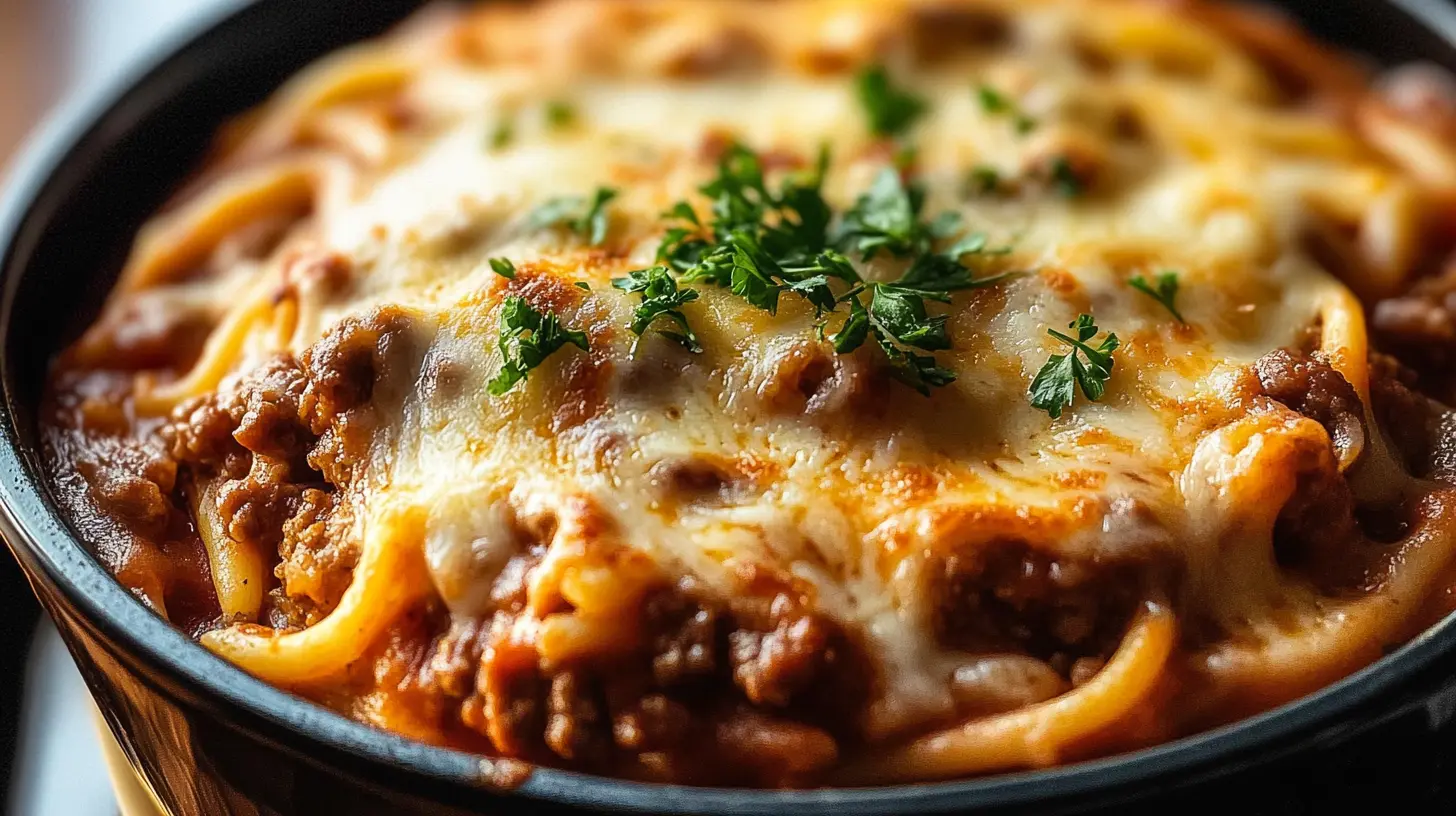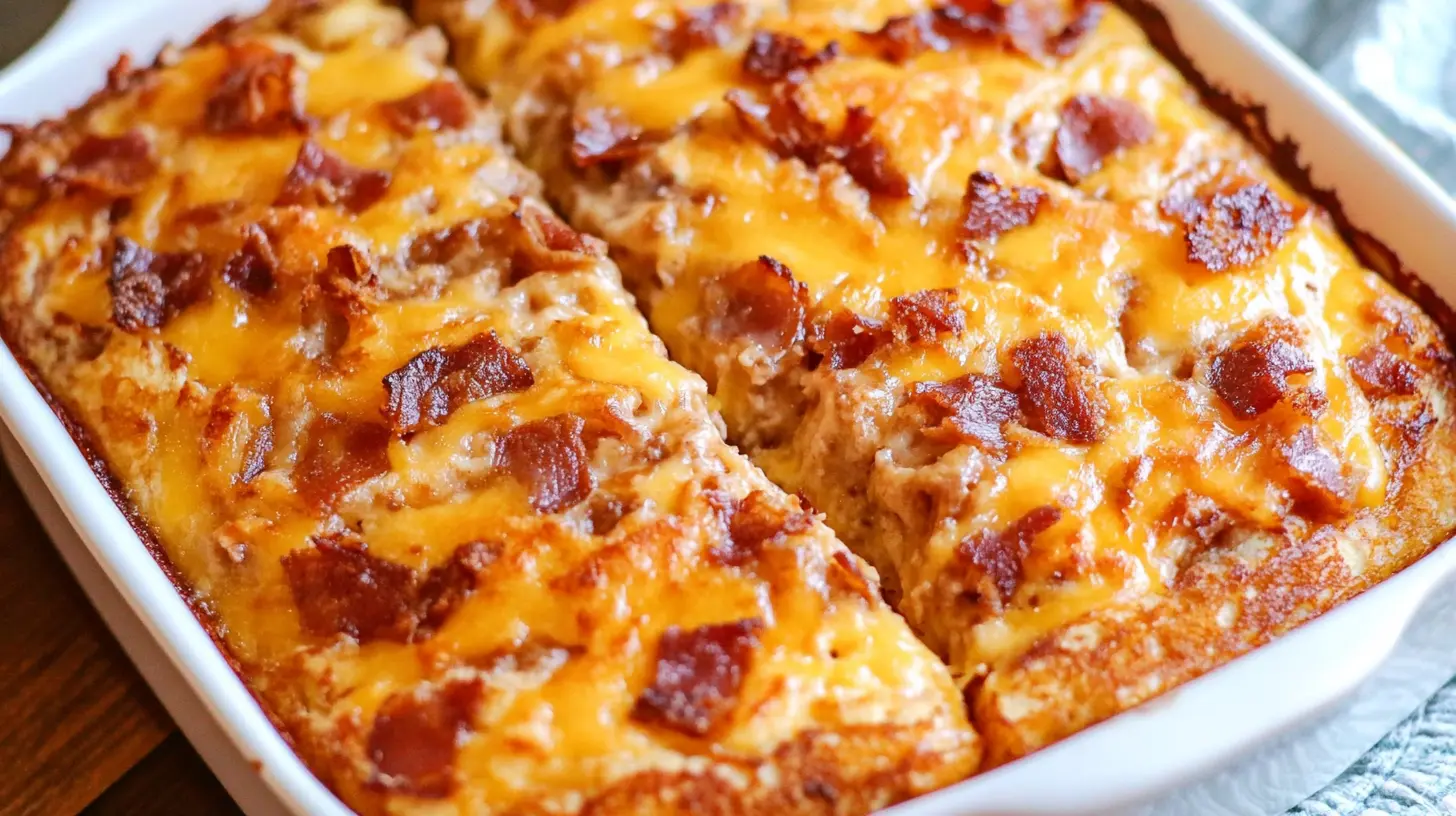Introduction to Protein Banana Bread
Looking for a nutritious way to enjoy a classic favorite? Protein banana bread is the perfect solution! This delicious and moist bread is not only a great source of protein but also a fantastic way to use up ripe bananas. By adding protein powder and other healthy ingredients, you can turn this traditional treat into a nutritious snack that supports muscle growth and keeps you full longer. Whether you are a home cook, a busy parent, or a diet-conscious individual, this recipe is simple to prepare and caters to a variety of dietary needs.
What makes protein banana bread so appealing is its versatility. You can easily modify the recipe to suit different tastes or dietary restrictions, such as gluten-free, low-carb, or vegan options. Additionally, the recipe allows you to incorporate various flavors, from classic vanilla to rich chocolate. For those interested in experimenting with unique recipes, try pairing your banana bread with our Crab Brulee Recipe for a delightful contrast between sweet and savory. In this article, we’ll explore the benefits of adding protein to your banana bread, provide a detailed recipe, and offer tips on customizing it to your preferences. If you love comfort foods, you might also enjoy our Cheesy Hot Beef Sandwich Recipe, another satisfying option for your culinary repertoire.
Benefits and Advantages of Protein Banana Bread
Protein banana bread is not just delicious; it also offers numerous health benefits that make it a great addition to your diet:
Boosts Protein Intake
- One of the primary benefits of protein banana bread is its ability to boost your daily protein intake. By adding protein powder, you can increase the protein content significantly, making it an ideal post-workout snack or a nutritious breakfast option. This extra protein helps support muscle growth and repair, making it a perfect choice for those who are active or looking to build muscle.
Supports Weight Management
- The added protein in this banana bread promotes satiety, which can help reduce overall calorie intake by keeping you fuller for longer. This makes it an excellent choice for anyone looking to manage their weight. Additionally, by using natural sweeteners like bananas and honey instead of refined sugar, you reduce the glycemic impact, helping to stabilize blood sugar levels and prevent cravings.
Simple and Versatile
- This recipe is straightforward and easy to prepare, even for novice bakers. The ingredients are typically readily available and can be mixed in one bowl, minimizing cleanup. Moreover, protein banana bread is versatile; it can be customized with a variety of add-ins such as nuts, seeds, or dried fruits, and adapted to meet various dietary requirements. If you want to try another easy recipe that offers flexibility, check out our Sourdough Sandwich Bread Recipe, which is perfect for different types of sandwiches.
Ingredients Overview
Essential Ingredients for Protein Banana Bread
To make delicious protein banana bread, you will need the following ingredients:
- Ripe Bananas: 3 medium bananas, mashed. Bananas add natural sweetness and moisture to the bread.
- Protein Powder: 1 scoop (about 30 grams) of your favorite protein powder. Opt for a flavor that complements the bananas, such as vanilla or chocolate.
- Eggs: 2 large eggs. They help bind the ingredients together and add richness to the bread. Use flax eggs for a vegan option.
- Whole Wheat Flour: 1 cup for added fiber. Substitute with almond flour for a gluten-free version.
- Honey or Maple Syrup: 1/4 cup as a natural sweetener. Adjust the amount based on your sweetness preference.
- Baking Powder: 1 teaspoon to help the bread rise.
- Cinnamon: 1 teaspoon for added flavor.
- Greek Yogurt: 1/2 cup to keep the bread moist while adding protein. Use a plant-based yogurt for a dairy-free version.
- Chopped Nuts: 1/4 cup, optional, for added crunch and healthy fats.
- Vanilla Extract: 1 teaspoon for flavor.
Dietary Substitutions to Customize Your Protein Banana Bread
The protein banana bread recipe can be easily adapted to fit various dietary needs:
- Gluten-Free: Replace whole wheat flour with a gluten-free flour blend or almond flour to cater to those with gluten sensitivities.
- Low-Carb: Substitute regular flour with almond flour or coconut flour to lower the carbohydrate content.
- Vegan: Use flax eggs (1 tablespoon ground flaxseed mixed with 3 tablespoons water per egg) and dairy-free yogurt to make the recipe vegan-friendly.
- Keto-Friendly: Swap the bananas for pumpkin puree and use a low-carb sweetener like stevia or erythritol. Ensure the protein powder used is also keto-friendly.
- High-Protein: Increase the protein powder by an additional half scoop and add more Greek yogurt for an even higher protein content.
By incorporating these substitutions, you can enjoy protein banana bread that aligns with your specific dietary goals and preferences.
How to Prepare the Perfect Protein Banana Bread: Step-by-Step Guide
Follow these steps to make the perfect protein banana bread:
First Step: Prepare Your Ingredients
- Preheat the Oven: Preheat your oven to 350°F (175°C). Grease a 9×5-inch loaf pan or line it with parchment paper.
- Mash the Bananas: In a large mixing bowl, mash the ripe bananas with a fork until smooth.
Second Step: Mix the Wet Ingredients
- Add the Wet Ingredients: To the mashed bananas, add eggs (or flax eggs), Greek yogurt, honey or maple syrup, and vanilla extract. Mix well until all ingredients are combined.
- Stir in the Protein Powder: Add the protein powder to the wet mixture and stir until fully incorporated.
Third Step: Combine the Dry Ingredients
- Mix the Dry Ingredients: In a separate bowl, whisk together the whole wheat flour (or gluten-free alternative), baking powder, and cinnamon.
- Combine Wet and Dry Mixtures: Gradually add the dry ingredients to the wet mixture, stirring until just combined. Do not overmix to avoid a dense bread.
Fourth Step: Add Optional Ingredients
- Fold in Add-Ins: Gently fold in any additional ingredients such as chopped nuts, seeds, or dried fruits if desired. These add-ins provide extra texture and flavor.
Fifth Step: Bake the Bread
- Transfer to the Pan: Pour the batter into the prepared loaf pan and smooth the top with a spatula.
- Bake: Place the pan in the preheated oven and bake for 50-60 minutes, or until a toothpick inserted into the center comes out clean.
Sixth Step: Cool and Serve
- Cool the Bread: Allow the bread to cool in the pan for about 10 minutes, then transfer it to a wire rack to cool completely.
- Serve: Slice the protein banana bread and enjoy as a snack, breakfast, or post-workout meal.
Mastering Protein Banana Bread: Advanced Tips and Variations
To enhance your protein banana bread experience, consider these advanced tips and variations:
- Add Chocolate Chips: For a sweeter variation, add a handful of dark chocolate chips to the batter.
- Experiment with Flavors: Try adding spices like nutmeg or cardamom for a unique twist.
- Create a Swirl: Mix some cocoa powder with a small portion of the batter and swirl it through for a marbled effect.
- Use Different Protein Powders: Experiment with different flavors of protein powder, such as peanut butter or mocha, to create a new flavor profile.
- Top with a Crumble: Before baking, sprinkle a mixture of oats, chopped nuts, and a bit of brown sugar on top for a crunchy topping.
How to Store Protein Banana Bread: Best Practices
To keep your protein banana bread fresh and delicious:
- Refrigeration: Store the bread in an airtight container in the refrigerator for up to one week. This helps maintain its moisture and flavor.
- Freezing: Slice the bread and wrap each piece individually in plastic wrap, then place them in a freezer bag. Freeze for up to three months. Thaw slices as needed for a quick snack.
- Reheating: To reheat, warm slices in the microwave for 20-30 seconds or in a toaster oven until heated through. This brings back the fresh-baked texture and flavor.
Nutritional Value of Protein Banana Bread
Understanding the nutritional profile of protein banana bread is essential for those mindful of their dietary intake:
- Calories: Approximately 150-200 calories per slice, depending on the ingredients used.
- Protein: Around 8-10 grams of protein per slice, thanks to the protein powder and Greek yogurt.
- Carbohydrates: Approximately 20-25 grams per slice, mainly from the bananas and flour.
- Fat: About 5-7 grams per slice, depending on the add-ins like nuts or seeds.
- Fiber: Approximately 2-3 grams per slice, especially if using whole wheat flour or adding nuts and seeds.
FAQs: Frequently Asked Questions About Protein Banana Bread
Can I Use a Different Type of Protein Powder?
Yes, you can use any protein powder you prefer, such as whey, casein, plant-based, or collagen. Just ensure it complements the flavors of the banana bread.
Is Protein Banana Bread Suitable for Vegans?
Yes, with modifications! Use flax eggs instead of regular eggs and a dairy-free yogurt substitute to make the recipe vegan-friendly.
How Can I Make the Bread More Moist?
To increase moisture, add an extra banana, a bit more yogurt, or a tablespoon of melted coconut oil. Be sure not to overbake the bread, as this can dry it out.
Can I Add Other Ingredients to Protein Banana Bread?
Absolutely! Consider adding mix-ins like walnuts, pecans, dried cranberries, or even shredded coconut to enhance the flavor and texture.
How Long Does Protein Banana Bread Last?
When stored properly in an airtight container, the bread can last up to one week in the refrigerator. For longer storage, freeze the bread for up to three months.
Can I substitute protein powder for flour in banana bread?
Yes, you can substitute protein powder for flour in banana bread, but it is not a one-to-one substitution. Protein powder has a different texture and absorption rate than flour, which can affect the consistency and structure of your bread. It’s recommended to replace up to 25% of the flour with protein powder to maintain the desired texture and moisture levels. For instance, if a recipe calls for 1 cup of flour, you can use 3/4 cup of flour and 1/4 cup of protein powder. This substitution increases the protein content without compromising the bread’s overall quality. Additionally, adding extra moisture like bananas, applesauce, or Greek yogurt can help prevent the bread from becoming too dry.
Can we eat banana and protein together?
Yes, you can eat bananas and protein together. In fact, combining bananas with protein is a great way to create a balanced snack that provides both quick energy from carbohydrates and sustained energy from protein. Bananas are rich in potassium and fiber, while protein powders or high-protein foods help repair and build muscle. This combination is especially beneficial post-workout as it helps replenish glycogen stores and aids in muscle recovery.
What are the macros of protein bread?
The macros of protein bread can vary depending on the ingredients used. However, a typical slice of protein bread contains approximately:
- Calories: 90-120 kcal
- Protein: 7-12 grams
- Carbohydrates: 10-15 grams
- Fat: 2-5 grams
- Fiber: 2-4 grams
The macros can differ based on whether additional ingredients like seeds, nuts, or specific protein powders are used. Adjusting these ingredients will affect the bread’s nutritional profile, so it’s essential to calculate the macros based on your specific recipe.
Can I add banana to my protein powder?
Yes, you can add a banana to your protein powder shake or smoothie. Bananas not only enhance the flavor but also provide natural sweetness, reducing the need for additional sugars. Moreover, bananas offer dietary fiber and potassium, making your shake more filling and nutritious. Blending a banana with protein powder and a liquid of your choice (like water, milk, or a plant-based alternative) can create a delicious, nutrient-dense smoothie that’s perfect for a quick meal or post-workout recovery.
How does protein powder affect baking?
Protein powder can significantly affect the texture and structure of baked goods. When used in baking, protein powder can:
- Improve Nutritional Content: It increases the protein content of the final product, making it more filling and suitable for those looking to increase their protein intake.
- Change Texture: Too much protein powder can make baked goods dense or dry, as it absorbs more liquid than regular flour. To avoid this, it’s important to balance it with other moist ingredients or reduce the amount used.
- Affect Rise: Since protein powder does not have the same properties as flour, it can affect the rising process of baked goods. Adding a leavening agent like baking powder or baking soda can help maintain the desired texture.
For more on the role of different ingredients in baking, check out the Wikipedia page on Baking.
How to add protein to baking?
To add protein to your baking, consider these options:
- Protein Powder: Add a scoop or two to your batter, replacing a portion of the flour.
- Greek Yogurt: Substitute part of the fat (like butter or oil) with Greek yogurt to increase protein and reduce fat.
- Nuts and Seeds: Add chopped nuts, seeds, or nut butters to your recipes for a natural protein boost.
- Legumes: Use chickpea flour or bean-based flours as a partial flour substitute in recipes like brownies or cookies.
- Eggs: Increase the number of eggs in your recipe to boost protein content.
Is protein bread keto?
Yes, protein bread can be made keto-friendly by using low-carb, high-protein ingredients. Typically, keto protein bread uses ingredients like almond flour, coconut flour, and protein powder while avoiding traditional wheat flour. These ingredients are low in carbohydrates and high in protein and healthy fats, which align with the ketogenic diet’s principles.
How much protein is in one potato?
A medium-sized potato (about 213 grams) contains approximately 4 grams of protein. Potatoes are not considered a high-protein food, but they do provide a small amount of protein along with carbohydrates and important vitamins and minerals, such as vitamin C and potassium.
How much protein is in an avocado?
A medium-sized avocado (about 150 grams) contains approximately 3 grams of protein. Although avocados are not high in protein, they are an excellent source of healthy fats, particularly monounsaturated fat, and also provide fiber, vitamins, and minerals that contribute to overall health.
What is the best protein to add to baking?
The best protein to add to baking depends on your dietary needs and the type of baked goods you are preparing. Common options include:
- Whey Protein: Great for most baking purposes due to its mild flavor and ability to mix well with other ingredients.
- Casein Protein: Adds a creamy texture and is ideal for cakes and muffins.
- Plant-Based Protein: Such as pea or soy protein, which works well for vegan or dairy-free recipes.
- Collagen Peptides: A flavorless option that blends well in recipes without altering taste or texture.
Does baking affect protein?
Baking can slightly affect the structure of protein, but it does not significantly reduce the protein content of the food. The heat from baking can denature proteins, which changes their structure. However, this process does not diminish the nutritional value of the protein. For instance, when you bake with protein powder, it may slightly change the texture but still provides the same amount of protein.
How does protein in flour affect baking?
Protein in flour, primarily gluten, affects the structure and elasticity of baked goods. High-protein flours, like bread flour, create more gluten, leading to a chewy texture and better structure in bread. Lower-protein flours, such as cake flour, produce a tender, crumbly texture suitable for cakes and pastries. When baking with protein powder or high-protein flours, balancing with other ingredients is essential to achieve the desired texture and rise.
By understanding these nuances, you can effectively incorporate protein into your baking, enhancing both the nutritional value and texture of your baked goods.
Conclusion
Incorporating protein banana bread into your diet is a delicious way to boost your protein intake while enjoying a classic treat. This versatile recipe is perfect for those looking to increase their protein consumption, manage their weight, or simply enjoy a healthy snack. With easy substitutions, you can customize the recipe to fit various dietary needs, whether you prefer gluten-free, vegan, or low-carb options. Remember, the key to a perfect protein banana bread lies in balancing the ingredients to maintain both flavor and texture. Start experimenting today and enjoy a nutritious, protein-packed snack that supports your health and fitness goals!

Posted by: Hailee | November 27, 2024
I’m passionate about sharing sweet and savory recipes that I’ve meticulously tested and perfected in my own kitchen. Join me on this delicious journey to experience the best of culinary creativity.




